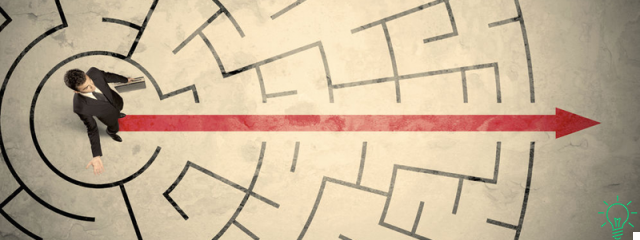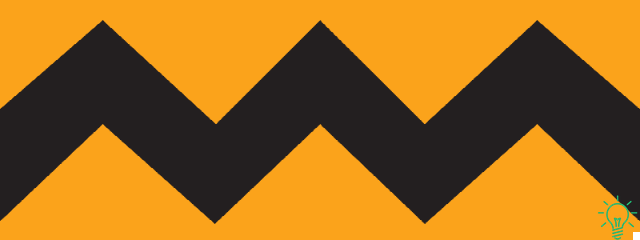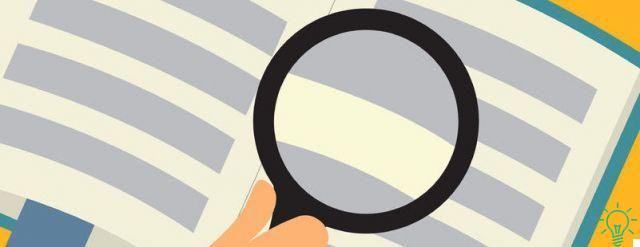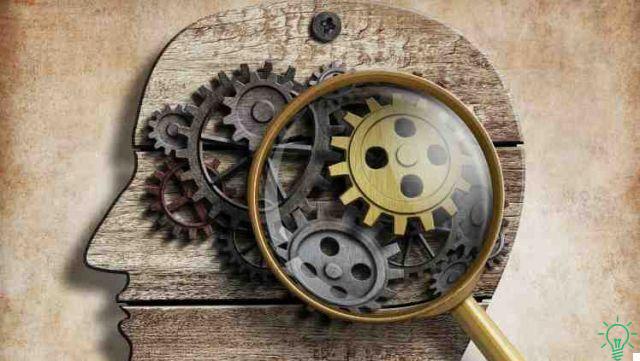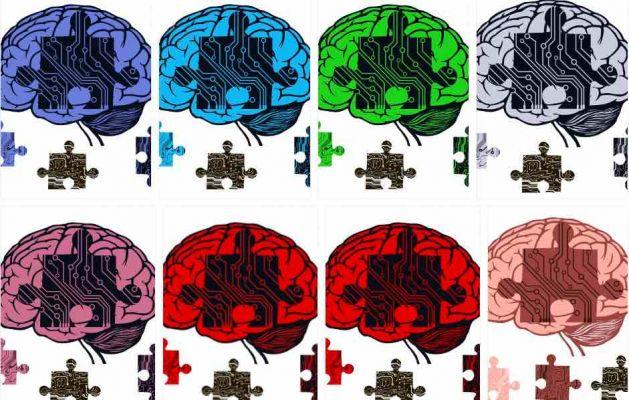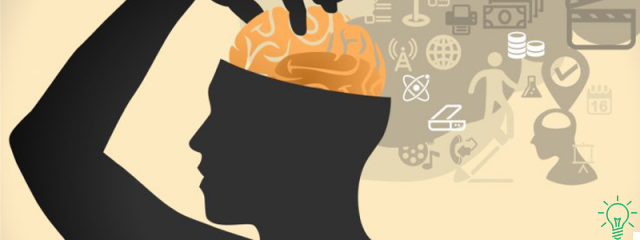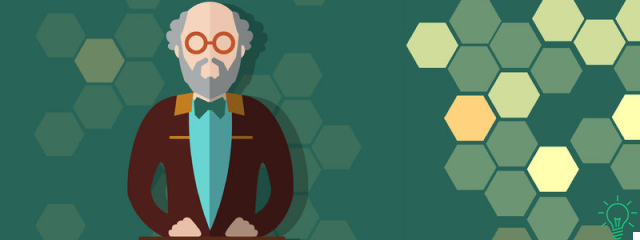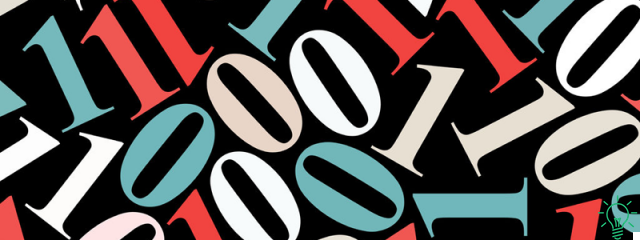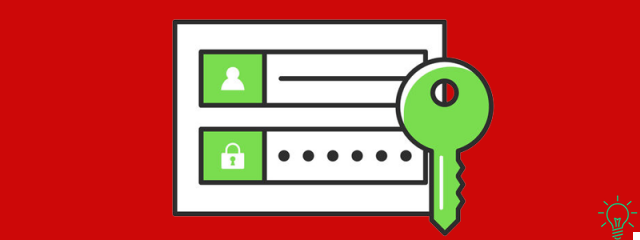
For some time I wanted to do a post dedicated to memory techniques to study medicine, and so I decided to publish this very long exchange of emails with Raffaele, a medical student enrolled in the Audaci Della Memoria.
An email exchange has the merit to be very "real", because it is a real comparison, done off the cuff, on the real problems of those who study. Instead it has it disadvantage not to have much structure, and therefore it is not easy to follow.
Furthermore, if you don't know anything about memory techniques, it will seem like a dialogue between madmen, more than 6 thousand words in length.
But if you already know them a little, you will find many, many ideas, even if you don't study medicine!
It is a factual article not to make you learn (even if you will learn something ...) but to make you reflect on the application of the techniques thanks to the experience of a student who is starting to do it seriously.
I never tire of repeating that learning the theory of techniques is not difficult, while applying them in the study takes time and reflection.
For this reason I wanted to report the emails we exchanged almost exactly, with very few editing changes and some useful links, in such a way that you can see how things really are articulated and complex when it comes to applying them to the study.
But if you learn how to do it, you can achieve extraordinary results!
One last thing: I also corrected the 273 grammatical errors that Raffaele and I made in the rush to write to us, and forgive me if I missed any!
Let's start:
RAFFAELE
Hi Anthony, I don't use lei and I don't apologize for the inconvenience (as you asked in your blog post), but I have to apologize for the length of this message.
In order to better explain what I would like to talk to you about, it is necessary to be very detailed to give you as much information as possible about me, and about my goal in the study.
First of all, I am a medical student, and it makes me very happy to be able to speak to a doctor, because he knows well the difficulties that we encounter in our university career, and also the most difficult subjects.
I am interested in memory techniques, and have been trying to improve my study method for years now.
I also attended a course of a great charlatan (although obviously the main mnemonics are those), I read and / or leafed through many books, also attended forums on memory, I even did a search on PubMed on which substances present in food supplements had a proven effect on memory, I tried to test the association between study and perfume (starting from the idea that the olfactory sensitivity, being the oldest, and fast, as it is a trineuronal path while the other sensory pathways are four neurons, I tried to memorize better by associating a smell to the information studied), I also recently bought many new texts (including your "quick memorization techniques") to sift through any news.
Unfortunately I was able to apply mnemonics very little, only in some cases; the best was certainly the Biology exam, in which in addition to the basic notions, a large part of the exam was based on the memorization of a large number of proteins / enzymes and their function.
Already having a list of the hundreds of proteins to memorize, made by another student, I just had to invent associations.
If imagining that "katanin" cut amino acid residues like a katana (from which it takes its name), it was easy, for other proteins or acronyms it was really difficult because even if I tried hard it was difficult to find original and meaningful associations, and those very forced that I found, they were useful to me, but they were not very effective because I tended to forget them.
Instead in other exams such as microbiology, or anatomy, I was unable to apply them if not marginally (for example to learn the bundles of the marrow thanks to the creation of acrostic sentences).
My renewed interest in memory techniques, despite my poor results up to now (mainly due to little exercise, because I got discouraged after poor results, I have always abandoned) is due to the fact that I am taking the Pharmacology exam.
I was really delighted by your article in which you helped that veterinary student, because I saw that you not only apply memory techniques, but you use logic together (which is the thing that makes me memorize the most), the study method ( for example, do not memorize useless information) and mnemonics.
We finally got to the point of my questions after this long description of the backgroud:
1) Are you planning to write any specific books on medicine soon? In English and regarding the health professions (such as nursing), there is a manual to easily remember the subjects of study, but in Spanish and for medicine, NOTHING. It would be really useful for thousands of students every year to be able to save effort thanks to your help (imagine if so many notions were easily remembered as your example "CANVAS" and the markers of pancreatic inflammation)
2) Soon I will buy your book on how to remember the titles of the books of the Old Testament, which you recommended for pharmacology, because even there the names are abstract, but I wanted to ask you which method you used specifically for pharmacology during your Education. For example, biotechnological drugs have absurd names; how can I build an image for "daclizumab" or "basiliximab"?
3) Often the information has a hierarchical structure (clearly highlighted through mental maps), for example the classification of antibiotics is full of subclasses, and to remember well the information of the single drugs, it is also important to remember the respective classes and subclasses they belong to. How can I do to better remember the whole structure?
In yours there is a chapter dedicated to the "Chinese boxes" method, but in that case it is a concatenation, while I would need something to connect the technique of loci (and therefore spatial and visual memory) to a method to remember exactly the structure of the contents (therefore a sort of Chinese boxes). What can be an efficient method (and not only effective, remembering the example of the machine that breaks through the wall)?
Thank you so much for your attention and patience.
ARMANDO
Hi Raffaele,
I will soon write an article on Medicine, also because it is a university where the amount of material to be memorized is truly immense.
Among other things, almost completely useless: most doctors then need in their professional practice some notions of anatomy that would fit into 30 pages or so. And the surgeons, who, on the other hand, must know it perfectly, seeing things live every day, often of a single anatomical sector, learn them by force.
This is why I would perhaps title the article: medical students, welcome to the Marine Corps.
The Marines do workouts that include a thousand push-ups a day, but it's not like they go into battle to do push-ups. The principle is to select the most motivated, and prepare them for the fatigue of work.
The University of Medicine does the same thing with its first year students, immediately offering them Anatomia, the brick exam par excellence. It's not that they really need all that anatomy, it's that it prepares them for the hard work ahead.
Having said that, don't be embittered for having done the memory course and overpaid it. Investing in your education is essential, it shows intelligence and motivation; it's just that sometimes it's good and sometimes it's bad. Over time you learn to select better, and you realize:
- that before spending a lot of money it is better to read a couple of cheap books and see if it's worth it
- that if a one-year master's degree for doctors that gives you 100 ECM costs a thousand euros, a memory course for a weekend cannot in my opinion cost 1500.
So, continue to train even outside the purely medical area, just learn to select better.
Now let's go specifically: if you have done research on pubmed you may have also searched for the keyword method, which is used above all for foreign words and "difficult" words in your own language. There is a lot of research, and almost all of them agree on its effectiveness.
Spaced repetition methods are also universally recognized as more valid than simple rote repetition. So memory techniques work, even for medicine.
The problem with some very challenging subjects is that it is difficult to find "drills", ie mechanisms to remember.
So you start with the techniques, you see that you go very slow, and eventually the anxiety makes you abandon them. In fact sometimes creating an entire superstructure to remember what is already a superstructure (eg antibiotic classes) is daunting.
And there are also subjective factors; for example, in his day, I enjoyed studying anatomy 1 and splanchnology with the techniques; while neuroanatomy was a real birth, with these bundles moving and I couldn't find a way to figure out how to remember it.
It's been a long time now, and maybe I should try again with the experience I have now.
To be able to write books with all the "drills" for medicine, I would have to do the university all over again; for this I can only limit myself to examples. Also because the drills depend on subjective experiences and knowledge, and therefore it is difficult to make them see well for everyone.
It would take a “wiki” project, done by the students themselves; as you said, thanks to a list made by another student, you were able to use the techniques for biology; imagine if he had also made a drill for each molecule in addition to the list! You would have gone much faster.
Regarding the examples you gave me: both molecules, which I don't even remember were there when I studied, end in mab: Monoclonal Anti Body, which is what they are. This is a first info to note.
I then proceed with the search for drills:
Basilixmab: “basil” is more than enough as a clue. You will have to attach basil to the locus you are using, or to any other storage system you are using at that moment (you could for example have the B inside an acronym that reminds you of all the molecules ending in MAB)
Daclizumab: much more complicated, you need a phrase like DAgLi ZUcchero, and a joke: your kidney transplant patient has low blood pressure, the nurse asks you what to do and you say "give him sugar"
Let's analyze them together: the first one in my opinion is easy to find, and very similar to the original. It is also very easy to view.
The second is much more problematic: it is not easy to find, it is not as well visualized as the word "basil", it can make you feel a bit stupid to do so, it contains a lot of "noise"
But I think both work well. You don't have to obsess about looking for perfect words; as you know, the info is not on a single neuronal cell, but is dispersed and then reassembled; to put them back together it is often enough to have a good clue, on which the brain then attacks the rest by completing the word.
You will admit that if you are studying monoclonal antibodies and you see the story of "give it sugar" in your head it is not difficult to remember DACLIZUMAB, or something very very close to it.
In addition, it also brings you the information that is used in kidney transplants. But let's say you are wrong and you remember DAGLIZUMAB: the mere fact of making mistakes and noticing the mistake will reinforce the correct memory, through a feedback circuit.
Of course it takes some time to gain the necessary experience, which is why it is not worth taking expensive courses, but a lot of exercise.
Another flaw when using the techniques is trying to attack all the info at once: for example, trying to immediately attack the mechanism of action, the target, the pharmacodynamic curve, and company singing.
Instead, you have to use them in a "concentric" way: first learn what a drug is and what it is called; not that you do not read the rest, indeed, it may be that by reading other info of the drug you can immediately acquire the info.
But don't try to remember everything right away. You will attach new info to each spin. You will see that you will find yourself better.
Since memory techniques are a little frustrating at first, while they work best when data piles up, I recommend you give them a real chance and take a case-control test:
- select 50 drugs and learn them with the traditional technique (control)
- select 50 more and learn them with memory techniques (chance)
- review each group after two days
- on the fourth day try to repeat and establish the% of retention for each group
Naturally try to create, as far as possible, two groups of homogeneous difficulty.
Finally, for antibiotics, try building a tree like this:
A sequence of loci, on which you attack the various classes - glycopeptides, sulfonamides, quinolones, beta lactams, and so on.
For each class you must identify a figure that represents it. For example, a nice carton of milk, the one you drank as a child, for beta lactams.
At that point, for the subclasses, you go to segment the milk carton itself, which becomes a path of loci itself: for example, on the opening spout there are some disgusting cuticles (penicillins); you open it despite the disgust, and on the surface of the milk (the second segment you selected), mullets swim (they are fish, I think you know them; and it is the image for cephalosposrins). and so on.
The tree is theroically "exploitable" indefinitely. I look at the mullet, for example, and segment of the loci on it for ceftriaxone, cefixime, and so on. (By creating images for "triaxone", "ixima", etc, that is, not for the prefix "cef": in fact, I already remember this thanks to Cephalus).
It is certainly complex, especially for a subject such as pharmacology. But in the medium to long term it is faster.
Finally, don't forget that mnemonics are not a religion; many kids start using them, almost from scratch, throwing other strategies overboard; while instead you learn slowly, first using them here and there, but with consistency, and then more and more.
I hope I have been exhaustive. In the end the answer came so long that maybe the public on the blog, naturally maintaining anonymity about you.
Read these articles on the blog, I hope they will be useful to you, even if not specific to medicine.
How to memorize foreign words with the keyword method
How to take notes with the Cornell method
The method of delayed repetition
RAFFAELE
Dear Anthony, thank you for the quick reply, I must say, it surprised me.
Every student complains about their condition, but it's more of a psychological issue from my point of view.
Everyone tends to complain about their standards, and if they don't have a problem, they tend to complain about the little things too.
The problem, as you said, is that everyone only has an idea of the difficulties of their course of study, but for example, they have no idea of the effort and time lost for Anatomy (the cross of every medical student and the nightmare of every doctor)
I also always thought, especially with the subjects of the first three years, that the notions were exaggerated, and it is so, but medicine is very complex, the more information you have, the easier it is to have a general idea and a deeper understanding.
All the information you do not use, you forget, and as you said, practically, of the anatomy you study, you need very little, but if one day you need them for your clinical practice or research or even curiosity, that information, you would already have a basis to be able to read / study faster that subject that you had learned years before.
I fully agree with you, investing in your education is the smartest thing to do, in fact almost always, the money they give me for my birthday I use it for something useful for my training (such as tablets for reading the sbobinature, or writing summaries, used are for study purposes and never playful) and that's why I went to take that course.
I was angry about the quality, however, because 1500 euros, based on my standard of living, is really a lot, and I was expecting something more useful.
I had already read at least one or two books on memory techniques, and in the end, apart from advertising, motivation (which, however, is so useful, and is the reason why you leave the book, instead you apply yourself to the courses), and some attempts to apply the techniques under study (even if inefficiently, because things were quite complicated), we did nothing.
As you said yourself, I should have realized that it would not have been worth it, but I was 15-16 years old, so many interests, passions and topics that I wanted to study, but I was held back by the little free time because I always had to study.
Apart from my young age, there were not yet all these memory courses or books that had such a strong psychological hold, so in addition to a little less maturity, I was also much less used to psychological "tricks" or reassurance that apply those who try to sell you something to improve you.
Everyone applies more or less the same tricks:
- before knowing the memory techniques, they were poor outcasts of society, who had difficulties in studying and in life, and they put too much effort into it
- after the memory techniques they can study "one thousand thousand" (allow me this funny neologism, given the ironic tone) books in just 3 hours.
- with memory techniques you can pass any exam by studying two hours a day, then you can go to the beach with your girlfriend and have fun with friends. This aspect alone deserves a great deal of study; the deepest desire of every student is free time. I really like what I study, but the idea of having free time is such a strong desire, it dulls the mind. Promising a lot of free time to a student is like making a pathological gambler believe that he has found a method to win big money.
- you have to trust what you feel blindly, because even those who teach have made the same mistakes, but the problem of the lack of results is not due to the ineffectiveness of the techniques, but to the lack of "faith" or "application "Of the student. Beautiful dicks! This is really too comfortable; It is obvious that those who are more trained are much better, and it is also true that the techniques work, but if I am failing, you should not blame only my lack of faith and then wash your hands, maybe I am also using the techniques ineffectively, and the cause may be mine, but also of those who taught me, who failed to transmit to me all that they should have.
These are just some of the psychological "tricks" with which you try to sell courses or books, and I must tell the truth, while I was quickly reading and sifting through the new material, it took me a few minutes to become more and more interested in your work (both books , which then the blog when I discovered it) just for your honesty.
I am absolutely honest with you, I have not read your book more than 15 minutes and more than a few articles on the blog before contacting you (also because, believing that you would reply after a week, I would have largely finished the book and read further articles on the blog), because it struck me that you do not sell hope to poor chickens as I have been too.
You say: do you want to learn a book of 200 pages word for word? Maybe if you get good in two weeks or more you succeed (not in one day as many others promise), and then you say: “What the fuck do you need? You have to learn useful information, not word for word ”.
On pubmed I did not look for the "keyword method" because the only foreign language that currently interests me is English, but since I was a child I already have a good foundation, so rather than improve the vocabulary, I prefer to improve the understanding of the spoken language watching films in English.
I know the method of delayed repetition and I have used it (if you are interested, I downloaded a sort of more colorful and graphically organized summary of a very long article on pubmed made by researchers who analyze the main study methods used by students and evaluate them the effectiveness and almost the only effective method is only that of the delayed repetition according to them), I also organized a group for the creation of flashcards (Anki decks) of pharmacology but the delayed repetition needs to be very effective, of months of time, and I hope to pass the maximum exam in another two-three months.
To us anatomy 1 is SNP and OsteoArthroMiology, and memory techniques, I was not able to use them, in fact before you have described well the reasons why I was discouraged and abandoned. Not even I was able to use the techniques for all of NeuroAnatomy, but for some topics, such as beams, I was able to have an illumination. For example, if you already remember that the only important bundles (therefore no septomarginal or oval fascicles) of the posterior cord, are the gracilis and the cuneate, you remember those of the anterior cord with an acrostic, the others are all of the lateral cord.
Run towards me = CorReTe Towards Me Cor = corticospinal (obviously being in the anterior cord it is the anterior corticospinal), Re = anterior reticulospinal, Te = tectospinal, VErso = vestibulospinal Me = medial
No, but in fact Pharmacology 1 and 2 are made by great professors, in fact the textbook they wrote them, I think it is used almost everywhere (except in those faculties that use foreign books such as the Katzung) and therefore we study new drugs, old drugs taken off the market, drugs that are in clinical trials, and sometimes drugs that have even been approved for a few months.
As for antibodies, Mab, as you said stands for Monoclonal AntiBody, then there is a part of the name of an antibody that indicates the target "Li" in those examples I did, it stands for lymphocytes, then for example "xi "Should stand for chimeras, and" zu "for humanized antibody.
It occurred to me that the names of monoclonal antibodies were difficult and I wrote you the first two that I found in the transcripts (because I still have to learn the names of all the drugs).
About Daclizumab, you turned on a light bulb! You reminded me that a doubt I always have is whether or not to use elaborate images (such as the patient with kidney transplant); as you explain in your book, background noise is high with complex images.
For example, if I visualized a video in my head the video of a cartoon (the Simpsons) in which the father needs a kidney transplant, and the son should give it to him, I certainly also have the information on the clinical indication as well as the name, but all the information relating to the cartoon could confuse or distract me?
Also could you explain better what you mean by "attaching new information to each lap"? That is, I create a first mental image that I need to remember the name of the drug, then I create another one to link? Or in the same scene, do I associate some new element to remember the new information?
I give an example because it is more difficult to explain without:
I want to remember atropine, as a mental image of the drug, inside the drug superstructure of the sympathetic system, and in the substructure of sympatholytics, I put the image for example of a girl named PINA.
Considering that the effects such as mydriasis are obvious, if you know the effects of the parasympathetic, many uses are obtained only by reasoning, but let's say that the use of a sympatholytic together with pralidoxin for organophosphorus poisoning does not come to mind because you only think that you give yourself the antidote and don't think that you could instead occupy the receptor sites with a competitive antagonist to avoid muscarinic symptoms.
So I decide to also associate the use of atropine in poisonings. Imagine a war in which they throw poisonous mustard gas bombs or other such compounds that inactivate the AchE and tie it to the image of Pina? Or do I take Pina, take her for a short walk, create an image in which she poisons herself, and then I also imagine she gets up because the poisoning doesn't have that much effect on her?
And if I imagine a dialogue between the doctors who should treat you or people who intervene on the spot, is it bad? For example, it is easy for me to remember things if they have a logic, so if when people intervene to help the poisoned Pina, they explain that she should be immune to these poisons, because it blocks the muscarinic receptors and prevents the effects from occurring. collateral, is it bad? Too much background noise?
On the other hand, the "structure" you have created for antibiotics is fantastic. What do you think if, for example, I imagine the milk carton resting on my desk? One of the problems that I have set myself in creating imaginary structures is that I am not yet good enough at visualizing, instead so I should also rely on some spatial memory. In any case I will try this superstructure and let you know!
Thank you very much for your help, I will read the articles as soon as possible; I also think that this answer you have given me can clarify some important concepts and therefore you should publish it on the blog.
Have a nice weekend !
ARMANDO
Hi Raffaele,
I congratulate you, you have a great ability to analyze and you want to reflect on things; this allows you to articulate them from many points of view.
I agree with a lot of things you've written, and you've also given me some interesting insights.
I answer a bit random.
The system you describe about memorizing syllables is very similar to the one I am studying (not in the sense that I am developing it, I am studying the one made by an English guy) for the study of Chinese, a language that made up of mono or al words. maximum bisyllabic, and which therefore can be entirely constructed from a limited number of sounds.
Can it also be done for Spanish? Yes of course. Is it worth it? I do not know.
Remember that what he often needs is just a clue, not the whole word. Of course, being able to associate the whole word syllable by syllable gives you security, but the investment of time is greater.
Then one thing that I forgot to tell you in the previous email: let's go back to the example of cephalosporins, and imagine having to remember the various names: ceftriaxone, cefixima, ect. The prefix CEF, which is already in "mullet", I do not carry it with me on every single molecule. The images I make are for "triaxone" "ixima", etc. Otherwise it becomes very cumbersome and confusing.
On the "concentric circles": they are used to manage all the background noise that is generated when you have to remember a lot of stuff.
If you immediately try to remember everything, from the general to the details, you have a lot of trouble. Both with and without the techniques.
For this reason I have always studied by deepening at successive levels, starting from the general data and then going down into the details. As you say, if you already know the sympathetic system, studying atropine is easier because many things are already taken for granted, that is, logical. Therefore, you do not have to attack a series of “pure” data in your mnemonic structure (that is, free from everything else), but a series of already correlated information.
In the specific example you are doing, I would not have our PINA do so many interactions. Instead, you will look for a Pina you know well, and I would go and post the various info on her. For example, I would put Plato's Phaedo in your hand.
In Phaedo, Socrates commits suicide by drinking hemlock; a good dose of atropine would have saved him. It is a typical example of the limits and virtues of memory techniques: for me it is a very solid image, for someone who does not know Plato it is very weak.
For this reason I have never systematically developed manuals to remember a specific exam: I should use either images that are too general and therefore not very effective, or specific images that make sense for some and do not for others.
Apart from that, I really like this segmentation technique (which you have already seen for antibiotics), in which maybe Pina, who is in one of her locus, becomes in turn a reservoir of loci. I prefer it over having Pina interact in space (for example the doctors who come, etc).
Imagine that, for example, you always miss the name of the receptors that atropine occupies as an antidote: on the cover of Plato's book, I put some musk: muscarinic
Let's also say that I don't remember who antagonizes: on the back of the book I put a bottle of vinegar: aceticoline. In this way, from a given, Pina, I continually explode new ones.
Although I would not actually attack, and so perhaps I will fully explain, words like muscarinic or acetylcholine: it is in fact information that I have learned at higher, more general levels. And so it will be logic to make me remember them in the context of the study of atropine! I don't know if I was able to explain myself.
In this regard, a small excursus: for me a “pure” datum is a datum that, when I learn it, has no logical connections with other data.
This lack of logical connections anatomically mirrors a lack of synaptic connections: the result is that it is very difficult to remember. Much information has intermediate characteristics, that is, it has a "pure" part, and a "connected" part. In my opinion, going in concentric circles, from the general to the particular, allows to reduce the "purity" of the information, because knowing the overall structure first and well, illuminates the subsequent passages with "connections".
On enhancing images: there is a trade off between the time you invest and the result. A weak image, after a few repetitions, becomes strong. Or maybe you don't immediately think of any strong ones, but a few hours later while you're on the subway yes.
So in my opinion we shouldn't go too far against a word because we don't think of a good image. Also because in general, after a while, even something you have learned with memory techniques is released from them and you know it, full stop.
Regardless of the technique with which you learned it at the time. It is therefore a question of deciding, on many occasions, whether it is better to settle for a weak image and then repeat it a couple of times more, or whether to invest time to create a stronger one. In general, as a rule, I never invest more than three minutes in one image. More than 3 minutes means that at that moment I am not able to create a satisfactory one, and I go on with what I have found.
In most cases, a good image is found in less than 30 seconds, if there is one, and if you have been practicing your memory techniques for a while.
I hope I have managed to fulfill some of your curiosities.
A greeting
RAFFAELE
Hi Anthony, thank you very much for answering me; surely you have fulfilled my curiosities, but others have come to me.
But I begin to answer you about the "manual for Spanish syllables", perhaps it is not worth it for subjects like Spanish, history, but for those scientific subjects such as medicine, biology, chemistry.
Creating images for words that tell us nothing is difficult. Sometimes the name helps (example: erythromycin = erythrocyte + mycina [my girlfriend's kitten], Neomycin = Neo Cortex [the villain of Crash Bandicoot] + mycina) but I have to break down words like aztreonam.
I noticed that you really like the segmentation technique, in fact you use it in your book on memory techniques also to create the database.
Here, here I have some doubts. If decomposing a dog into muzzle, eyes, ears and tail is easy, I would need for my memory palace to decompose the lamp in my bedroom 6 parts, and an easy decomposition would be in maximum 3/4 parts.
To make it easier, I had thought about combining the alphanumeric file to sort the images as an additional reinforcement.
I know that adding an extra image for you risks creating too much background noise, but I think it is more viable for me to do that rather than segmenting a locus so much that I don't remember the logical path from start to finish.
First, I needed a way to distinguish the images in the file from those of the drug name. And I thought I'd imagine the "numbers" in black. Black tea is the number, while the "colored" tea is part of the name of the drug; this idea does not convince me very much but it is the best that I have come up with.
The second problem, it needs your help.
For several exams of the same session, you wrote that it is not convenient to use the same loci. I guess it's the same for the images too. I should always use the same 5-6 of the file to sort out the information of the same level.
Will this confuse me? Even if it is an amplified problem that I could also have with the names of the drugs. How many antibiotics end with "kitten"?
Thanks also for the tip you put in the book on Old Testament names:
Anchoring arguments to our body is useful.
For example, I have anchored the drugs acting on the nervous system to the head, those of the digestive system to the belly because there is the intestine, chemoantibiotic therapy to the penis because there are sexually transmitted diseases, both viral and bacterial, the metabolism drugs to the fingers of the hand because you get finger pricks to check your blood sugar if you have diabetes, and so on.
Then I make one part of my body interact with the environment, as you call it, that is, my room, the bathroom, the kitchen.
Thanks again for your patience, I look forward to your response on sorting all images segmented with the first numbers of the file or other “predefined” images because perhaps it is the last obstacle to building a good memory / database building.
Soon :)
ARMANDO
Hi Raffaele,
the alphanumeric file is very fascinating because it allows you to create really many hook images.
For example, by crossing two filing cabinets of 100 in a matrix, you can get 10.000 cards. I'll give you an example: in position 3273 of the file you will have a hook image made up of two images, that of "32" and that of "73", connected in this exact order (so as not to get confused with position 7332).
Of course we are starting to reach already advanced levels of complexity, but what we can do with it is also amazing.
However, I generally advise against using filing cabinets. You must not take this "advice" in a fundamentalist way, that is, if you believe that they can work well for you, nothing prevents you from trying your hand at them.
In my opinion, filing cabinets are inferior to loci because they are in any case an artificial product, that is, you build them and then you have to actively memorize them, transferring them from short-term to long-term memory.
The loci, on the other hand, are already engraved in long-term memory, and therefore more stable. It's about learning to spot them! For example, I am convinced that in your lamp there are more than 3-4 clearly identifiable and well-ordered loci.
I would start from the socket to which it is connected: locus 1. Then there is the connection cable: locus 2. Then there is the power button along the cable: locus 3. Then there will be a point where the cable connects to the lamp: locus 4. Then there is the base of the lamp: locus 5. The stem: locus 6. And then the bell, the bulb, which in turn has a glass part, an attachment, tungustene filaments to the inside.
If you imagine being the size of an ant and walking along your lamp, seeing these things in enormous size, as if you were zooming in on them, you will see that it is not difficult to identify many, many loci. Immediate, ordered, well defined, and already engraved in the long-term memory.
As I tell you, however, even the filing cabinet has its virtues. Try to send me an example, even if not long, of use, and I try to analyze specifically how you did it. And I am sending you a proposal of how I would do it with the loci.
As for the antibitiotics ending with kitten, it is a good example of the practical application of mnemotencics: you build a well-structured image of a “kitten”, and you attach them all to us! Maybe with a series of chains that correspond to different logical groups.
A greeting!
CONCLUSIONS
For those who have come all the way, I think this article was really full of information, and I thank Raffaele for all the passion he puts into writing to me. Maybe the article was not very easy to follow, due to the less structuring of the emails compared to a traditional article, but I think it gave you a true idea of memory techniques and how to use them in practice.
I really liked confronting myself with Raffaele's questions and observations, it will be nostalgia for the University…. By the way, we're not done emailing yet, and maybe someday I'll post the sequel.
And don't forget, especially if you are studying medicine, to share the article on Facebook.
Greetings. Anthony






